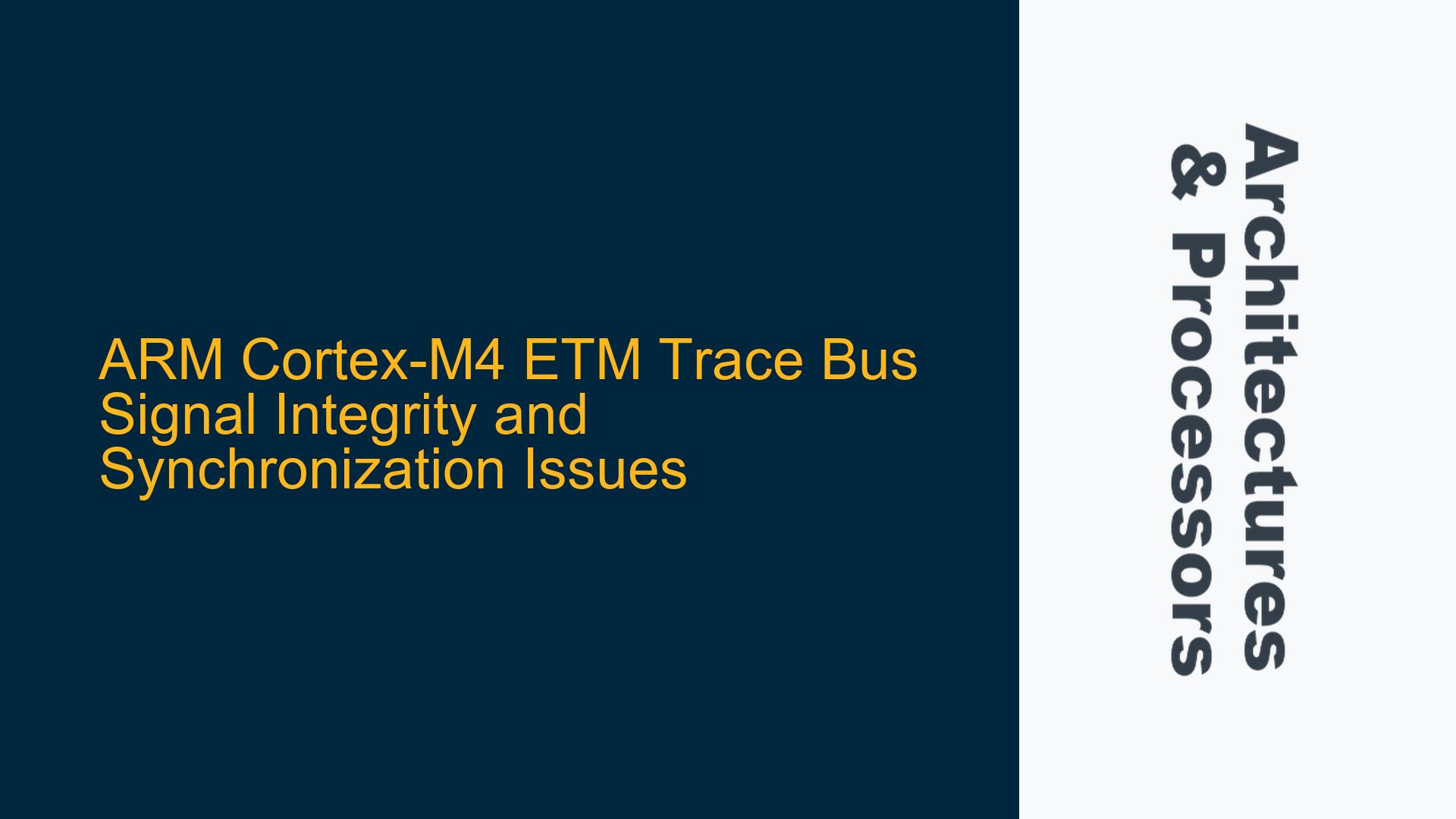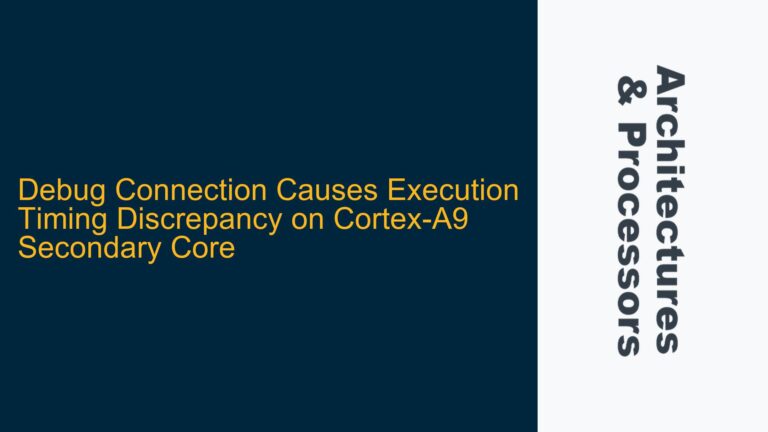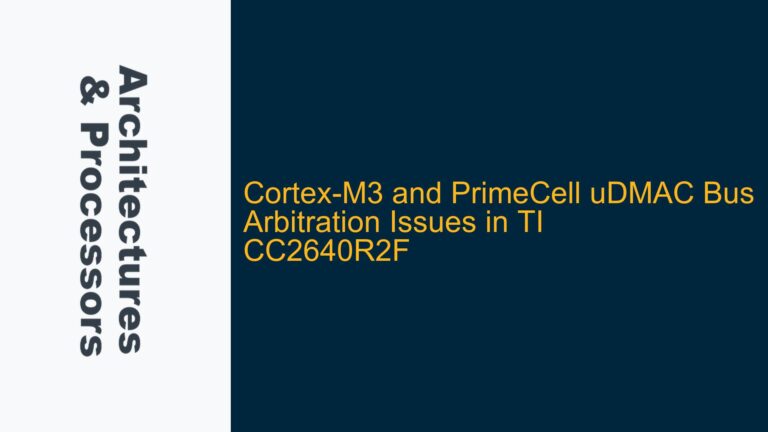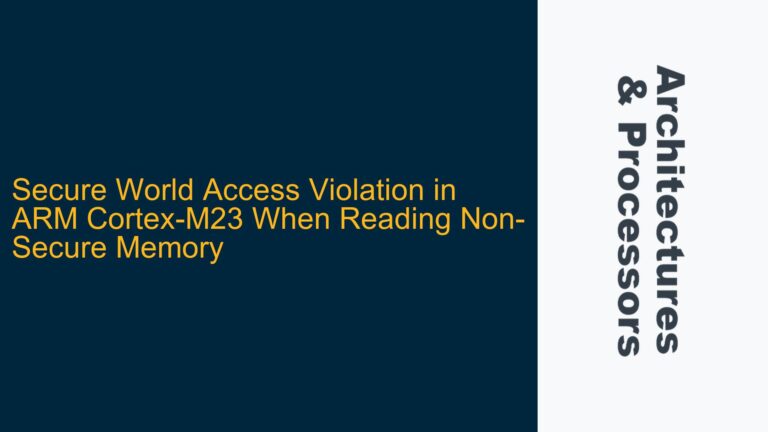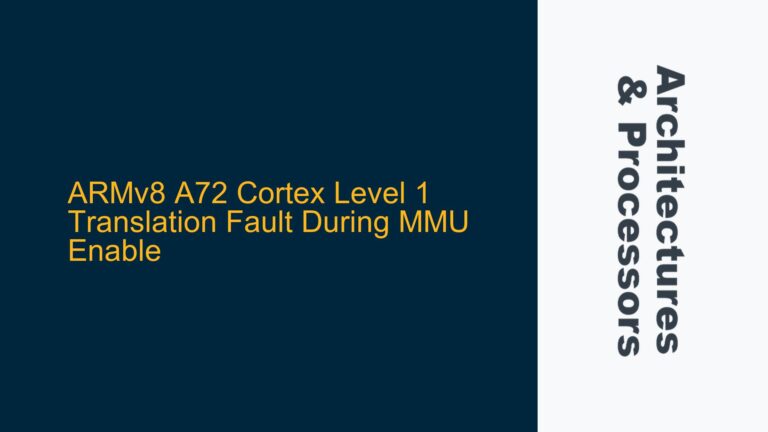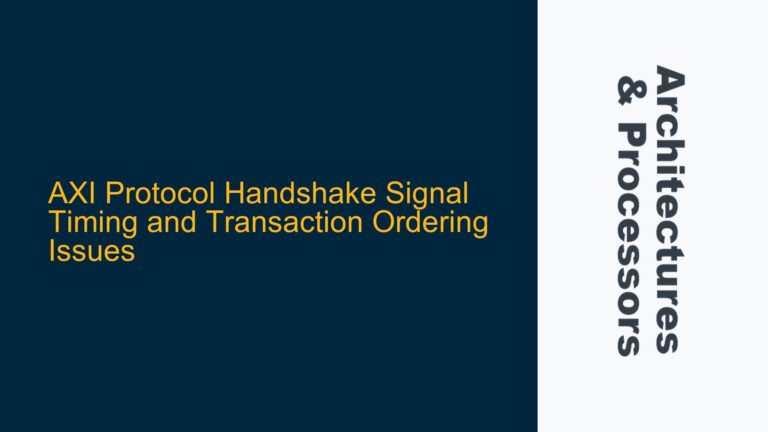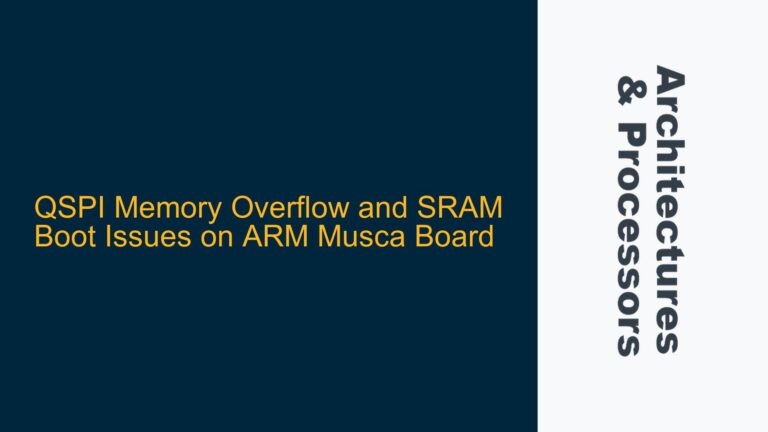ETM Trace Data Synchronization Errors in Keil IDE
The Embedded Trace Macrocell (ETM) in ARM Cortex-M4 processors is a powerful tool for real-time debugging and trace analysis. However, signal integrity issues on the ETM trace bus can lead to synchronization errors, particularly when interfacing with debug tools like Keil IDE. These errors manifest as "Trace stream errors," indicating that the trace data being captured is either corrupted or out of sync with the expected timing. The root cause often lies in the hardware design of the trace bus routing, improper signal termination, or timing mismatches between the ETM port and the debug interface. Understanding the nuances of ETM trace bus signal integrity is critical for resolving these issues and ensuring reliable trace data capture.
The ETM trace bus is a high-speed interface that transmits instruction and data trace information from the Cortex-M4 core to an external debug probe. The bus consists of multiple signals, including trace data lines (TRACEDATA), a trace clock (TRACECLK), and control signals like TRACECTL. The integrity of these signals is paramount, as any degradation can lead to misinterpretation of the trace data by the debugger. Common symptoms of signal integrity issues include intermittent trace errors, incomplete trace captures, or complete failure to synchronize the trace stream.
In the context of Keil IDE, the "Trace stream error" typically indicates that the debugger is unable to correctly interpret the incoming trace data. This can occur due to several factors, such as improper PCB layout, insufficient signal termination, or incorrect timing configurations. The ARM Cortex-M4 Technical Reference Manual (TRM) provides guidelines for ETM signal routing, but these guidelines are often overlooked or misinterpreted during hardware design. Additionally, the timing requirements for the ETM trace bus are stringent, and even minor deviations can cause synchronization issues.
To diagnose and resolve ETM trace bus signal integrity issues, it is essential to understand the underlying causes and systematically address them. This involves analyzing the hardware design, verifying signal integrity using oscilloscope measurements, and ensuring that the timing parameters are correctly configured. The following sections delve into the possible causes of ETM trace bus synchronization errors and provide detailed troubleshooting steps to resolve them.
Improper PCB Layout and Signal Termination
One of the primary causes of ETM trace bus signal integrity issues is improper PCB layout and signal termination. The ETM trace bus operates at high speeds, and any impedance mismatches or signal reflections can degrade the quality of the trace data. Common PCB design mistakes include inadequate trace spacing, excessive trace lengths, and improper termination resistors. These issues can lead to signal reflections, crosstalk, and timing skew, all of which contribute to synchronization errors.
The ETM trace bus signals should be routed as controlled impedance traces, with careful attention to signal integrity best practices. This includes maintaining consistent trace widths, minimizing via transitions, and ensuring proper grounding. The use of differential signaling for high-speed trace data lines can also improve signal integrity, but this requires precise matching of trace lengths and impedances. Additionally, termination resistors should be placed as close as possible to the ETM port to minimize signal reflections.
Another critical aspect of PCB layout is the placement of the debug connector. The debug connector should be located as close as possible to the ETM port to minimize trace lengths and reduce the risk of signal degradation. Long trace lengths between the ETM port and the debug connector can introduce significant signal attenuation and timing skew, making it difficult for the debugger to correctly interpret the trace data.
To verify the integrity of the ETM trace bus signals, it is recommended to perform signal integrity analysis using an oscilloscope. This involves measuring the signal quality at various points along the trace bus, including the ETM port, the debug connector, and any intermediate points. Key parameters to measure include signal amplitude, rise/fall times, and timing skew between the trace clock and data lines. Any deviations from the expected signal characteristics should be addressed by revising the PCB layout or adjusting the termination resistors.
Timing Mismatches and Configuration Errors
Timing mismatches between the ETM trace bus and the debug interface are another common cause of synchronization errors. The ETM trace bus operates based on a trace clock (TRACECLK), which must be synchronized with the debugger’s sampling clock. Any mismatch between these clocks can result in incorrect sampling of the trace data, leading to synchronization errors in the debugger.
The timing requirements for the ETM trace bus are specified in the ARM Cortex-M4 Technical Reference Manual (TRM), but these requirements are often misunderstood or misapplied. For example, the TRM specifies the maximum allowable skew between the trace clock and data lines, but this skew can vary depending on the specific implementation and operating conditions. Additionally, the trace clock frequency must be compatible with the debugger’s sampling rate, and any deviations can cause timing mismatches.
To address timing mismatches, it is essential to carefully configure the ETM trace bus timing parameters. This includes setting the correct trace clock frequency, adjusting the trace data valid window, and ensuring that the trace clock and data lines are properly aligned. The ARM CoreSight Architecture Specification provides detailed guidelines for configuring ETM timing parameters, but these guidelines must be tailored to the specific hardware design and debugger requirements.
In some cases, timing mismatches can be resolved by adjusting the debugger’s sampling rate or introducing delay elements in the trace bus. However, these solutions should be implemented with caution, as they can introduce additional timing skew or signal degradation. It is often more effective to address timing mismatches at the source by revising the hardware design or reconfiguring the ETM timing parameters.
Implementing Signal Integrity Best Practices and Timing Adjustments
Resolving ETM trace bus signal integrity issues requires a combination of hardware design improvements and timing adjustments. The first step is to review the PCB layout and ensure that the ETM trace bus signals are routed according to best practices. This includes maintaining consistent trace widths, minimizing via transitions, and placing termination resistors as close as possible to the ETM port. Additionally, the debug connector should be located as close as possible to the ETM port to minimize trace lengths and reduce signal degradation.
Once the hardware design has been optimized, the next step is to verify the signal integrity using an oscilloscope. This involves measuring the signal quality at various points along the trace bus and comparing the results to the expected signal characteristics. Any deviations should be addressed by revising the PCB layout or adjusting the termination resistors.
After ensuring that the signal integrity is acceptable, the final step is to configure the ETM trace bus timing parameters. This includes setting the correct trace clock frequency, adjusting the trace data valid window, and ensuring that the trace clock and data lines are properly aligned. The ARM CoreSight Architecture Specification provides detailed guidelines for configuring ETM timing parameters, but these guidelines must be tailored to the specific hardware design and debugger requirements.
In some cases, it may be necessary to introduce delay elements in the trace bus to compensate for timing mismatches. However, this should be done with caution, as it can introduce additional timing skew or signal degradation. It is often more effective to address timing mismatches at the source by revising the hardware design or reconfiguring the ETM timing parameters.
By following these steps, it is possible to resolve ETM trace bus signal integrity issues and ensure reliable trace data capture. However, it is important to note that signal integrity and timing are complex topics, and resolving these issues may require multiple iterations of hardware design and testing. Additionally, it is recommended to consult the ARM Cortex-M4 Technical Reference Manual (TRM) and the ARM CoreSight Architecture Specification for detailed guidelines and best practices.
In conclusion, ETM trace bus signal integrity issues can be challenging to diagnose and resolve, but with a systematic approach, it is possible to achieve reliable trace data capture. By optimizing the PCB layout, verifying signal integrity, and configuring the ETM timing parameters, it is possible to eliminate synchronization errors and ensure accurate trace analysis in Keil IDE.
